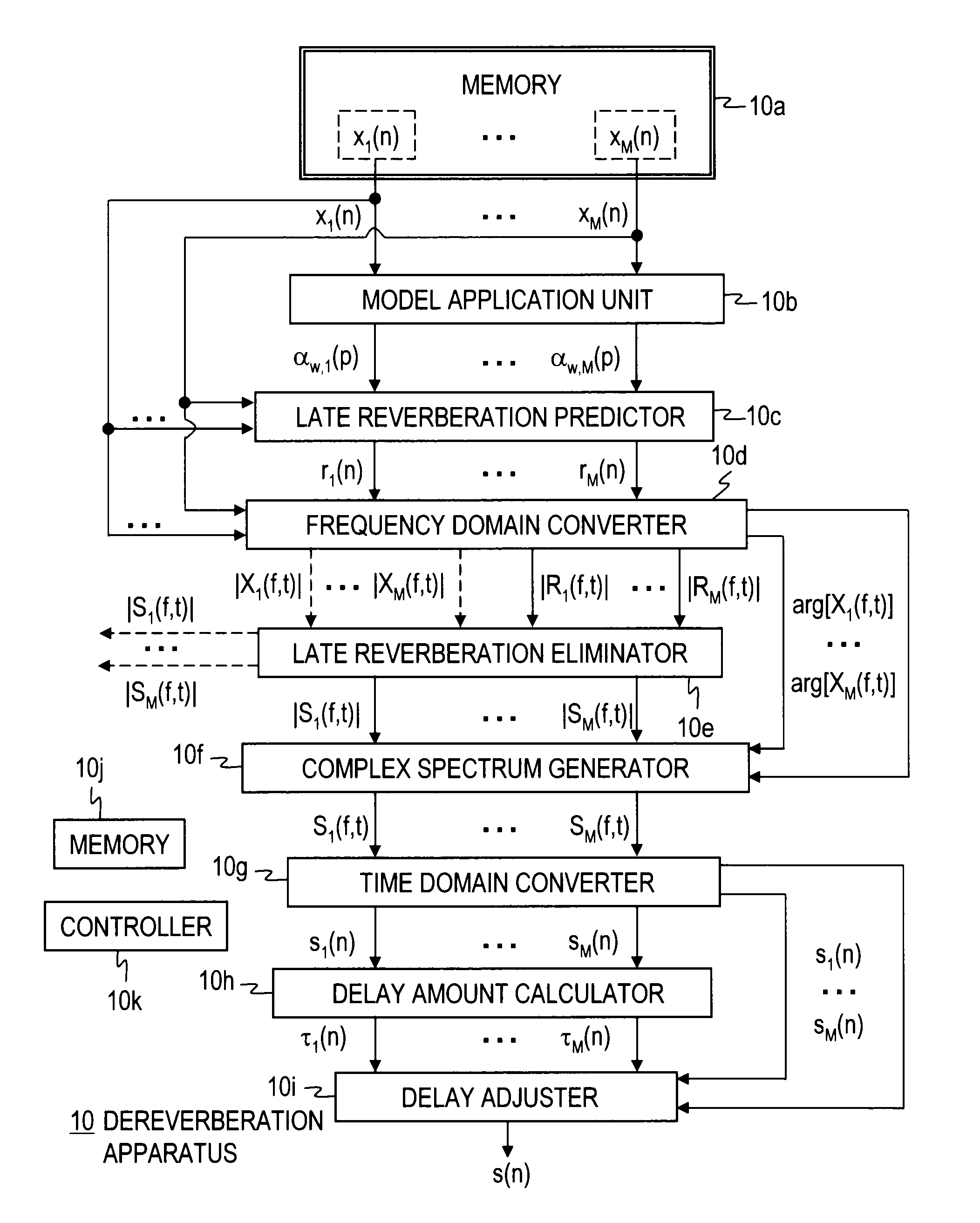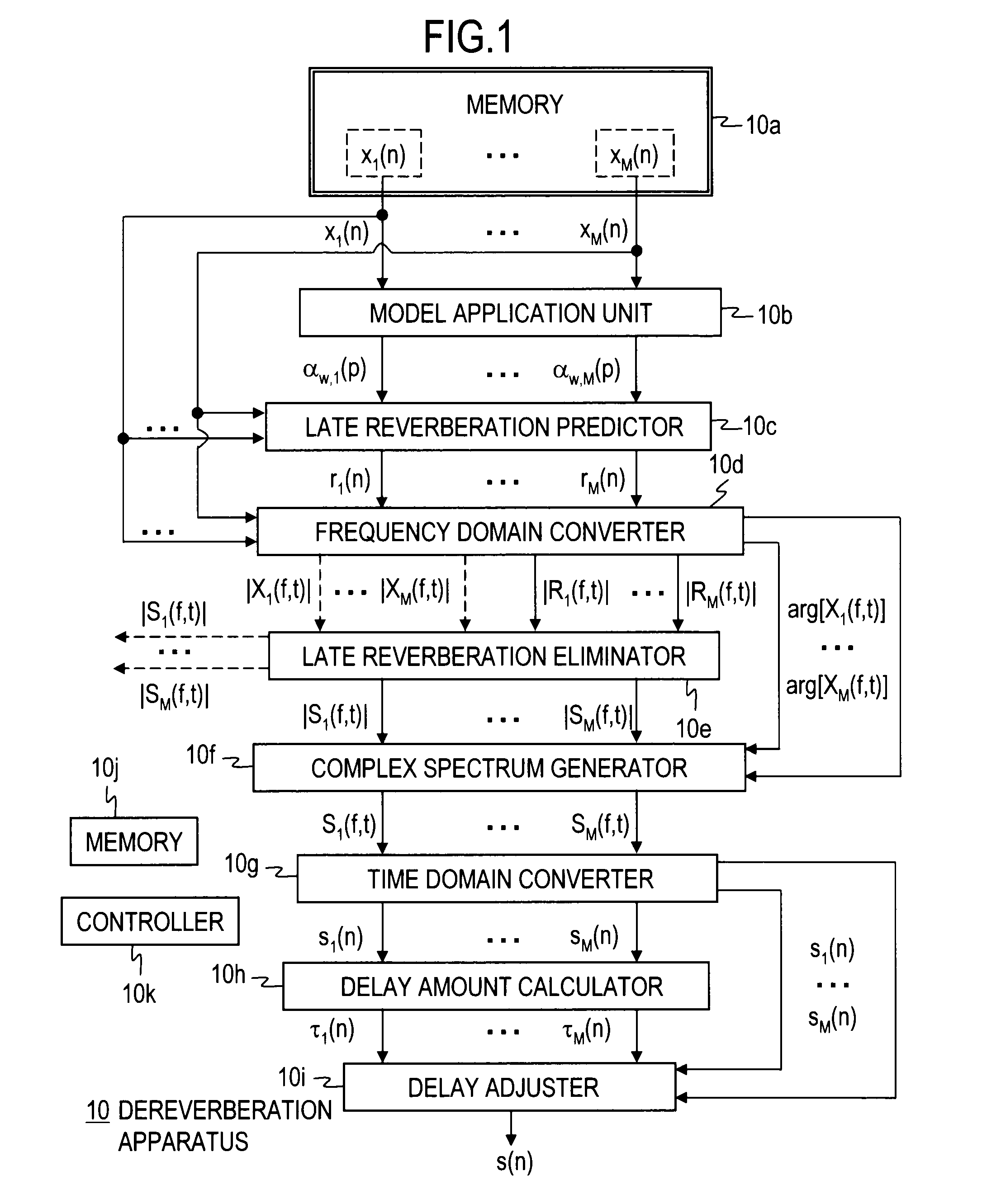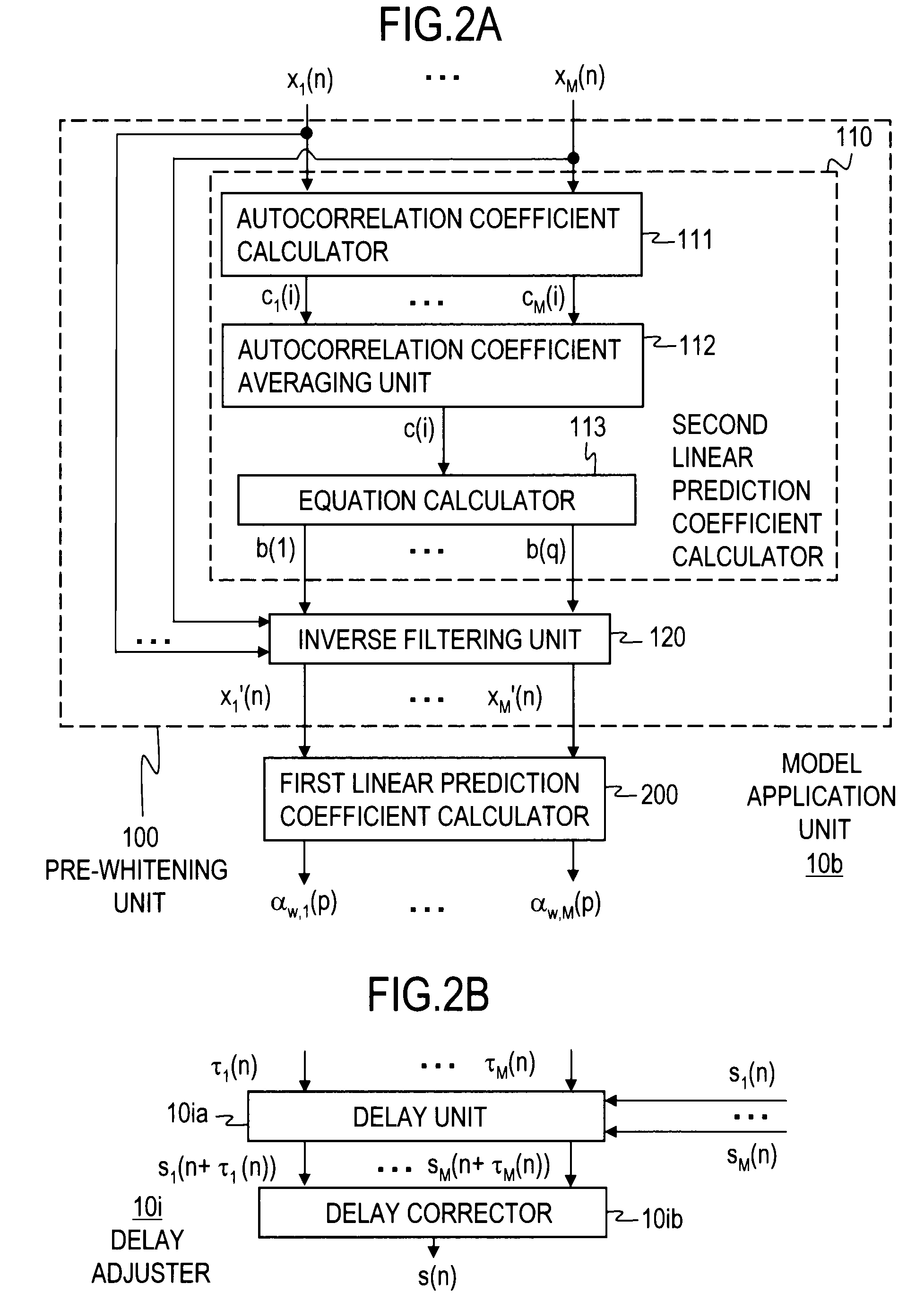Dereverberation apparatus, dereverberation method, dereverberation program, and recording medium
a technology of dereverberation and dereverberation method, applied in the field of dereverberation apparatus, dereverberation method, dereverberation program, and recording medium, can solve the problem of difficult to extract the original characteristics of the acoustic signal, and achieve the effect of accurately removing the reverberation
- Summary
- Abstract
- Description
- Claims
- Application Information
AI Technical Summary
Benefits of technology
Problems solved by technology
Method used
Image
Examples
first embodiment
[0136]A first embodiment of the present invention will be described next. In the first embodiment, the number of sensors M is greater than or equal to 2, i.e., M≧2.
[0137]FIG. 3 is a block diagram showing the hardware structure of a dereverberation apparatus 10 of the first embodiment.
[0138]As shown in FIG. 3, the dereverberation apparatus 10 shown as an example includes a central processing unit (CPU) 11, an input unit 12, an output unit 13, an auxiliary storage device 14, a read-only memory (ROM) 15, a random access memory (RAM) 16, and a bus 17.
[0139]The CPU 11 shown includes a controller 11a, an operation unit 11b, and a register 11c, and performs a variety of operations in accordance with programs read into the register 11c. The input unit 12 is an input interface to which data is input, such as a keyboard or a mouse, and the output unit 13 is an output interface from which data is output. The auxiliary storage device 14 is a hard disk drive, a magneto-optical disc (MO), a semic...
second embodiment
[0187]A second embodiment of the present invention will be described next. The second embodiment is a modification of the first embodiment.
[0188]In the late reverberation prediction process (step 2) of the first embodiment, each linear prediction value obtained by substituting the linear prediction coefficients αw,1(p) to αw,M(p) and the non-pre-whitened discrete acoustic signals x1(n) to xM(n) into the linear prediction term of the multi-step linear prediction model is calculated as each of the predicted late reverberations rw(n) (w=1 to M). In the dereverberation process (step S4), the relative values of the individual sensors, between the amplitude spectra |X1(F, t)| to |XM(f, t)| of the non-pre-whitened discrete acoustic signals in the frequency domain and the amplitude spectra |R1(f, t)| to |RM(f, t)| of the predicted late reverberations in the frequency domain, are obtained, and the relative values are provided as the predicted amplitude spectra |S1(f, t)| to |SM(f, t)| of the...
third embodiment
[0207]A third embodiment of the present invention will be described next. The third embodiment is a modification of the first or second embodiment.
[0208]In the second linear prediction coefficient calculation process (step S31) of the first embodiment, the second linear prediction coefficient calculator 110 calculates the linear prediction coefficients b(1) to b(q) of the short-term linear prediction model, by using the average autocorrelation coefficient c(i) obtained by averaging the autocorrelation coefficients c1(i) to cM(i) generated in the individual channels.
[0209]In a second linear prediction coefficient calculation process (step S31) of the third embodiment, a second linear prediction coefficient calculator 410 calculates the autocorrelation coefficients of discrete acoustic signals obtained by sampling, at multiple points in time, the acoustic signal observed by one sensor that is the closest to the source of the acoustic signal among the M sensors, and calculates the indi...
PUM
 Login to View More
Login to View More Abstract
Description
Claims
Application Information
 Login to View More
Login to View More - R&D
- Intellectual Property
- Life Sciences
- Materials
- Tech Scout
- Unparalleled Data Quality
- Higher Quality Content
- 60% Fewer Hallucinations
Browse by: Latest US Patents, China's latest patents, Technical Efficacy Thesaurus, Application Domain, Technology Topic, Popular Technical Reports.
© 2025 PatSnap. All rights reserved.Legal|Privacy policy|Modern Slavery Act Transparency Statement|Sitemap|About US| Contact US: help@patsnap.com



